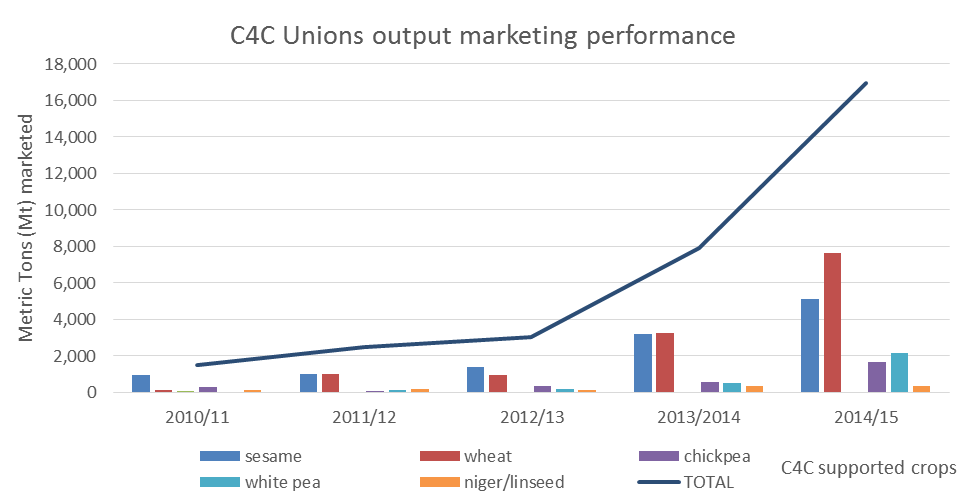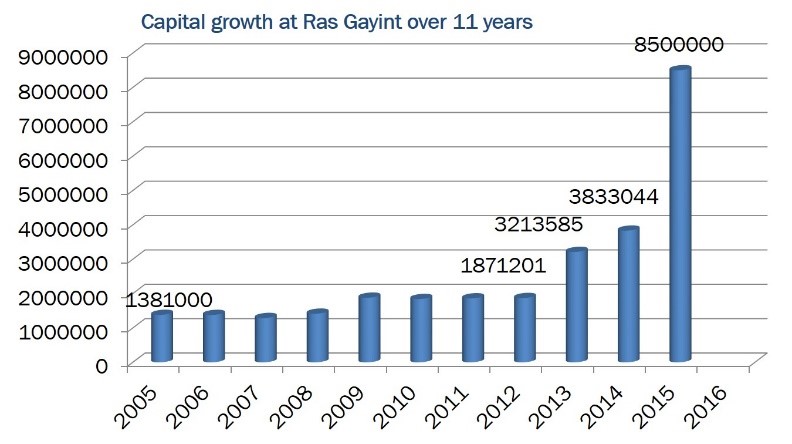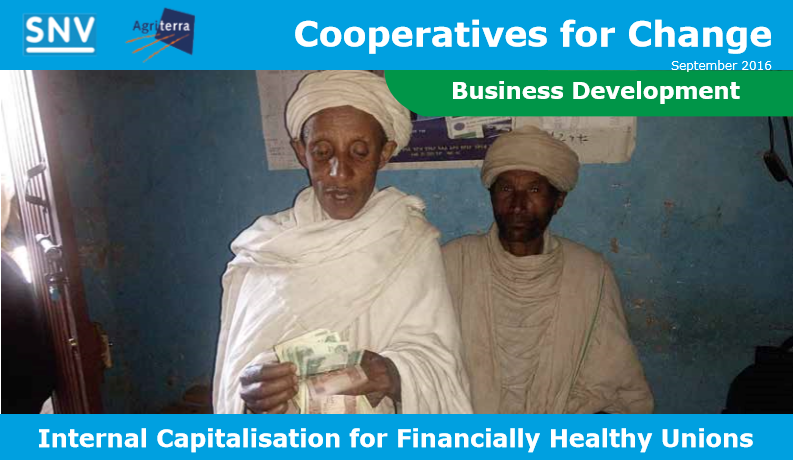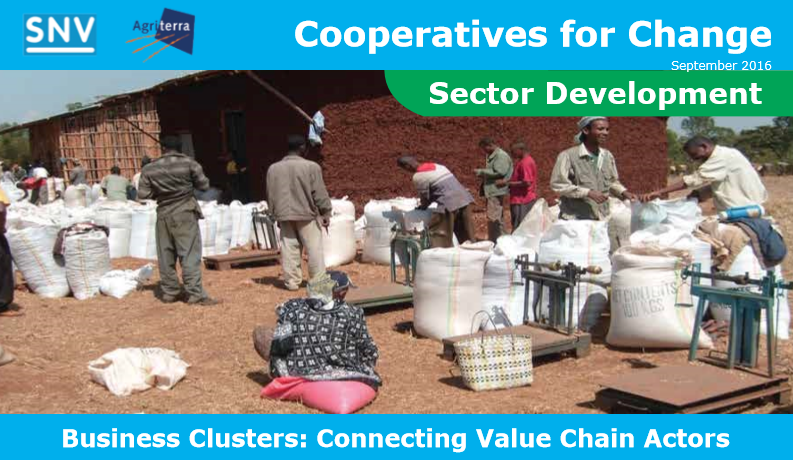C4C project - Ethiopia
The Cooperatives for Change (C4C) project, a joint SNV Ethiopia and Agriterra project, aimed to improve the business performance of agricultural cooperative unions and their member cooperatives.The awakening of sleeping giants
In Ethiopia, farmer cooperatives and unions fulfil a very limited role in collective output marketing and processing of their members’ produce. Only 5-10% of the available produce is collected and marketed or processed through cooperatives and their unions. As both the government and various other stakeholders like companies and research institutes have identified their marketing potential as enormous, they clearly seem to be the sleeping giants of the Ethiopian agricultural sector.
Cooperatives for Change

The Cooperatives for Change (C4C) project, a joint SNV Ethiopia and Agriterra project, aimed to improve the business performance of agricultural cooperative unions and their member cooperatives. C4C seeks to establish innovative changes to reinforce unions and cooperatives in improving production, establishing sustainable markets, adding value through processing, and increasing income for their members (smallholder producers), by combining SNV’s value chain development approach with Agriterra’ s experience in cooperative governance and management. In 2016 the C4C project has entered its last year and the project has demonstrated that some of those sleeping giants can be awoken. Unions that were hardly active in output marketing and processing finding their way in local and international markets for the better of the farmers. Since the start of the project output marketing figures are on the rise (see figure above).
Moving into white pea export
Take for example the Ras Gayint union, which is one of the 16 unions that participate in the C4C project. Before its entry in the C4C project in 2012 the union marketed 3,103 quintal (1 quintal = 100 kg or 0.1 metric ton) of various agricultural crops from its members. Now, 3 years later, it has boosted its marketing performance by tenfold to 36,823 quintal.

Table 1. Output marketing performance (qnt)
Under the guidance of C4C the union gave a lot of attention to white pea bean and managed to enter the export market. White pea bean trade grew from 1,313 quintal in 2012 to 14,329 quintal in 2016 and is still on the rise. C4C advised the union to add value to the product by hand-selecting and cleaning the beans, so as to enter into the premium export market. The union decided to do this in-house, in order to create a employment opportunities for its members and retain more profit. The union employed 200 women for the grading and cleaning of the white pea bean. The women are paid 35% above local daily labor rates, along with performance based incentives. This provided an average additional income of approximately US$50 per person per year (average annual income per small holder household in Ethiopia is about US$1,000-1,500). A real innovation has been the provision of a childcare facility. C4C team member: “To allow young mothers access to the employment opportunity a local crèche has been established to take care of the babies and young children while mothers are earning an income.“ The profit earned from white pea bean in 2015 was US$ 262.000.
Also with regard to financial health the union is showing good results. Internal capitalisation has contributed enormously to capital growth From a 82.800 USD (3.2 million ETB) in 2012 to a 391.000 USD (8,5 million ETB) in 2015 and an expected 506.000 USD (11 million ETB) in 2016. As the union manager Mr Melkamu stated: “Starting from its establishment up to the start of C4C the capital of the union was stagnant and there was hardly any growth. &5% of our growth has occurred in the last three years thanks to the advice and guidance from C4C”.
Results
SNV Ethiopia and Agriterra, have demonstrated that unions can be made into better business partners through well-designed capacity strengthening plans consisting of union ownership and consistent advice and follow-up coaching of unions by project staff. . Highlights of the project until end 2015 are:
-
Over 100% increase in output marketing by unions: from 8.000 MT (80.000 quintal) in 2012 to 17,000 MT (170.000 quintal) in 2015.
-
Training and coaching of 70 Primary Cooperatives (PC) in purchasing management has resulted in 25% more business at PC level.
-
Supporting unions to make bankable business plans and the facilitation of linkages between unions and financial service providers, especially Commercial Bank of Ethiopia, Cooperative Bank of Oromia and the Development Bank of Ethiopia led to thirteen (13) unions having access to finance for a total amount of US$ 14 million for working capital (for crop purchases) and investments (in agro-processing plants).
-
Successful introduction of Internal Capitalisation (IC) to improve unions’ financial health and investments. Four unions already have mobilized US$ 900,000 through emission of voluntary shares. Three other unions have started the IC process.
-
Almost 4,000 model farmers and 600 extension workers have participated in trainings to improve crop productivity and quality reaching out to approximately 200,000 farmers. Unions have supplied 1,850 MT of improved seed via their PCs, benefitting some 18,500 farmers
-
Preliminary results show that the farmers belonging to C4C unions have achieved a higher crop productivity of up to 14% and an estimated 20% increase in their farm incomes. Also, the number of farmers that understand the benefits and usefulness of being member of a cooperative has increased.
PDF to download: C4C in a nutshell







